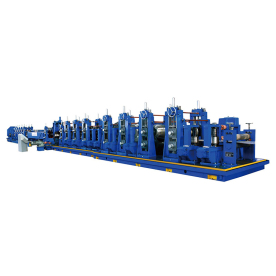
Revolutionizing Tube Production with Tube Making Machine with Cutting Function
Innovations in manufacturing technology have significantly transformed various industries, and the production of tubes is no exception. The introduction of tube making machines with cutting function has revolutionized the way tubes are manufactured, offering improved efficiency, accuracy, and versatility.

Revolutionizing Tube Production with Tube Making Machine with Cutting Function
Traditional tube production methods often involve multiple steps, including bending, welding, and cutting, which can be time-consuming and labor-intensive. However, with the advancement of tube making machines equipped with cutting functions, these complex processes can now be automated, streamlining production and increasing productivity.
One of the key advantages of using a tube making machine with cutting function is its ability to precisely cut tubes to the desired length, ensuring uniformity and consistency in the finished product. This not only reduces material waste but also enhances the overall quality of the tubes, meeting the stringent requirements of various industries such as automotive, construction, and aerospace.

Revolutionizing Tube Production with Tube Making Machine with Cutting Function
Furthermore, these advanced machines are equipped with sophisticated controls and software that allow operators to program specific cutting parameters, such as length, angle, and speed, with high precision. This level of customization ensures that tubes can be tailored to meet the unique specifications of different applications, providing manufacturers with greater flexibility and versatility.
In addition to cutting, tube making machines with cutting function often incorporate other features, such as bending, shaping, and end-forming capabilities. This integrated approach allows for seamless production of complex tube designs and configurations, eliminating the need for multiple machines and reducing production lead times.
Moreover, the use of advanced materials such as stainless steel, aluminum, and titanium in tube manufacturing has become increasingly prevalent in recent years, driven by the demand for lightweight, durable, and corrosion-resistant products. Tube making machines with cutting function are designed to handle a wide range of materials, ensuring compatibility with various industry requirements.
In conclusion, the adoption of tube making machines with cutting function represents a significant leap forward in the field of tube production. By combining cutting-edge technology with precision engineering, these machines offer manufacturers a competitive edge in terms of efficiency, accuracy, and quality. As industries continue to evolve and demand higher performance standards, the versatility and reliability of these machines will undoubtedly play a crucial role in shaping the future of tube manufacturing.HSS blade




